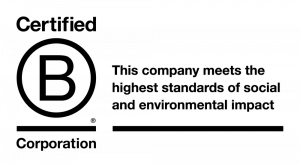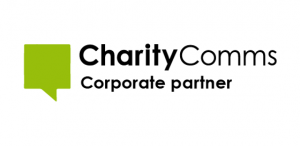Dark social is a mysterious type of traffic where links are shared in a private yet social way, such as sent in an email, by instant messenger or in a text message, and is an increasing problem in a measurable digital world.
Originally discussed by Alexis Madrigal in The Atlantic, Dark Social is traffic that originated from the share of a URL, but is marked as direct traffic in analytics tool.
As social media marketers, we strive for measuring traffic and where site referrals come from, but RadiumOne estimates that ~70% of social shares are “dark”. And a recent Chartbeat report stated that most brands are neglecting nearly three quarters of their social media impact because they aren’t considering “dark social media” channels — email, instant messenger, text message and now most importantly the rise of Whatsapp.
In this article:
“Dark social” is traffic that originated from the share of a URL, but is marked as direct traffic in your web analytics tool. This traffic could come from any of the following:
- Native Mobile Apps: Facebook, Twitter, Medium and other networks all have their own mobile apps
- Email: Most email-providers, like Gmail, don’t pass a referral when a user clicks on a link
- Secure browsing: If you’re browsing on a site using HTTPS and click a link to a site using HTTP a referrer won’t be passed.
- Organic search: In some browsers, Google won’t pass a referrer when a user clicks a link from an organic search.
How much of your social efforts are being chalked up to direct traffic? Odds are that it’s a decent amount. Navigating these murky waters and shining light on dark social is top-of-mind for nearly all sophisticated social media marketers right now.
What have industry commentators said about Dark Social?
Liz Gannes at Re/code reports that BuzzFeed is seeing more shares to WhatsApp than to Twitter on iOS, where it displays the button on its mobile web pages alongside other social share buttons from Facebook, Twitter and Pinterest.
That’s not to say it drives more traffic to BuzzFeed than Twitter does, but simply, as BuzzFeed told Nieman Journalism Lab, “The metric is that more people click the WhatsApp share button on iOS mobile web than the Twitter button.”
Quartz has reported that this is important for two reasons, “first, in as much as what we share is who we are on social media, it means that chat apps are, increasingly, how we are defining ourselves in relation to our social network. Second, it shows that the shift to private sharing is in full swing.”
These oft-uncredited types of media account for 69 percent of sharing that occurs online, comments Clickz, “this presents a major problem for brands trying to understand the value of their content marketing efforts and create a true attribution model.
Analytics platforms simply cannot determine the referral source, since they’re essentially invisible, thus the ominous “dark social media” moniker.
However, as Sam Kirkland states in Poynter effective dark social strategy is nothing new as the New York Times have been publishing their most emailed list for years.
How are brands reacting to Dark Social?
Online Brands like BuzzFeed, Shazam, and ASOS are already targeting “dark social” traffic with Whatsapp sharing via their iOS apps.
In an even bigger move, BuzzFeed’s growth in “mobile dark social” referral traffic has increased fourfold in the past 12 months, so they’ve hired a full-time employee whose role is to determine their messaging-apps strategy. The company also added a WhatsApp sharing button to its iOS site this past October and has seen shares from it steadily increase since.
For Team Sky, understanding dark social traffic is key to demonstrating its ability to sponsors to become more relevant to consumers of its content. The cycling team is using link shorteners and sharing widgets to measure all content interaction across its websites, social media and mobile platforms.
Universal Music Group is using the core fans of artists such as Ellie Goulding to act as a seed audience that drives clickthroughs from prospective fans, connected to or similar to the original group. The approach, which combines impending short URL sharing and acting on social insights in real-time, lifted the performance of programmatic media campaigns by 300%, claims the record label.
How you start measuring Dark Social?
An easy way to start measuring Dark Social traffic is to use URL shorteners, such as Bit.ly, to track outbound links. Shorter links also save your readers some characters if they want to post your content on social networks where space is limited, like Twitter.
All is not lost for your analytics, as most platforms (Google Analytics, Adobe Omniture, Chartbeat) have a section in their reports called “direct,” which counts all those apps that users use to click on links “direct to a site”, including Facebook, Reddit, Gmail, and Instant Messaging apps.
Twitter, on the other hand, has a special “t.co” URL shortener, which means Twitter referrals are always easily trackable. In the Twitter Analytics dashboard, there is a handy “Link Click” report that shows how many times links were clicked in your tweets.
What’s next with Dark Social?
We can still make the best of the situation by recognising that Dark Social exists, measuring it and incorporating it as part of a wider digital strategy, like BuzzFeed, Shazam, and Asos have.
The best way to unlock the potential of dark social is via social sharing tools such as URL link shorteners and sharing widgets that appear around online articles and content.
Users who share and receive content via these means can, subsequently, be targeted with relevant messages across the web – whatever sites they may be visiting.
Many brands are still not properly monitoring and evaluating the effectiveness of their activity on social channels. Getting this right first should be your first priority.
So the answer to Dark Social? Build in social media monitoring and evaluation, and make social sharing easier.




